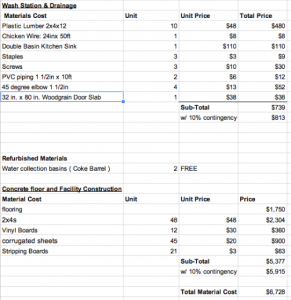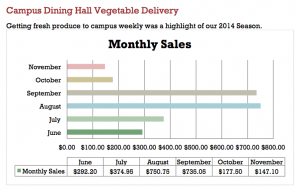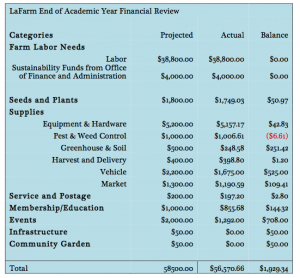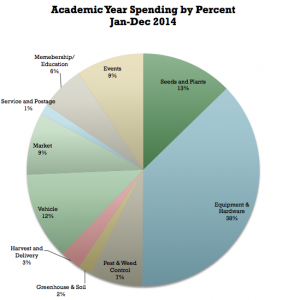Economic Analysis
Wash-station construction
Within the 2014 LaFarm’s Reports, one of the LaFarm’s vision for the future is to have an improved infrastructure and one feature is the wash station. In addition, this will also help the farm meet its standards under FSMA regulations. Hence, tying closely with the Technical Analysis and Social Context for sustainability design, we are choosing materials that have affordable costs while ensuring that our design is environmentally conscious.
Under the Food Safety and Modernization Act, it is in our best interest to construct the three walls extending from the original location of the wash station and a concrete floor along with slanted slab drainage system that would meet the code for regulations. As mentioned in the Technical Analysis, the spring 2016 Civil Engineering class will be the main constructors of the wash station as well as the concrete flooring and wall enclosure so labor costs are currently not incorporated in our calculation. As seen in the spreadsheet that we attached below , we estimated that this would take around $5,915 for the concrete flooring and three walls construction along with stripping boards and vinyl sheets to act as the wash station roofing. The construction of the wash station would cost approximately $813 with materials also listed below. In regards to selecting a size and capacity of a UV water filter, our group would refer the civil engineering construction team to Viqua in order to select a model that is comparable with the flow rate and the solar panels power output. As for the external battery, we faced difficulties in analyzing the buried water pump as well as the actual power output of the PV panel. This is an important aspect to consider as we select the appropriate deep-cycle battery to convert AC to DC current and power both the irrigation system and UV filter. Hence, we refer the spring project construction team to Solar Battery to consult the appropriate type, capacity and prices once these informations are determined.
Because a lot of our construction design and planning placed more emphasis on sustainable, low-cost, and easily replaceable materials, we are expecting the servicing and maintenance costs of the facility to be minimal and not much different from what we have before.

Another important thing that we need to consider is the vision of LaFarm in the near future. Per Sarah’s guidance and request, we are expecting the funding sources for this project will be coming from grants that LaFarm currently has. In addition, LaFarm also would like to add the green house to extend its farming season which is also included with a feasibility study in the LaFarm Green House Capstone Group . This is important for us to consider because the wash station can also be integrated with the large scale green house if LaFarm decision is to obtain one. As the result, we are proposing this cost estimate base on what we have so far as a short term vision for the improvement of our current wash station without taking into account of the integration with the green house project. Keeping this in mind, the long term vision of integrating with the green house is not impossible as our design for the wash station can be easily moved or reconstructed if needed.
LaFarm’s 2014 Financial Performance
It is also imperative that we also take a look at LaFarm’s financial review to gauge how our farm is currently operating in order to ensure its sustainability status. The attachments below are LaFarm’s End of 2014 Year Financial Review and The Academic Year Spending by Percentage. These informations gave us a closer look at LaFarm on a micro-economics level. As we have noted before, the main goal of LaFarm is to serve as a educational model to promote sustainability on our campus as well as other small scale farmers in the nearby local areas so profit margin is not heavily focused as a result.
Attached below are the sales of LaFarm’s produce for the dining halls on Lafayette campus. Although as we discussed in the policy analysis that LaFarm is considered to be a small scale production facility, the production scale is still important as LaFarm moves forward in the near futures. Currently, LaFarm financial standing is looking healthy in its current operating budget. The farm actual balance is currently under its forecasting costs and the monthly sales of produce is increasing within the growing season with August and September being its sale peaks.


(Reference: Edmonds, 2014)
(Reference: Edmonds, 2014)

